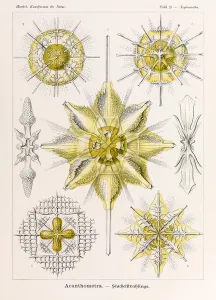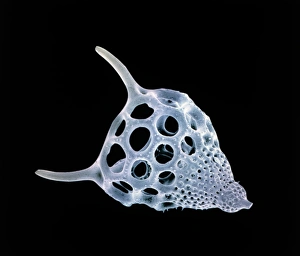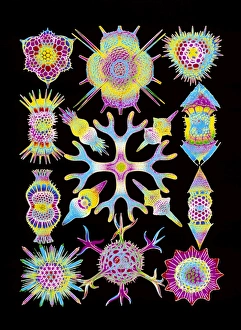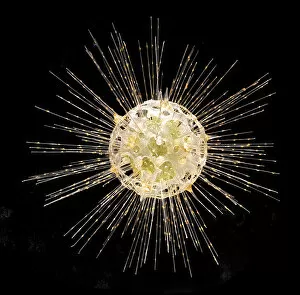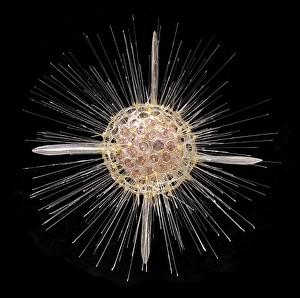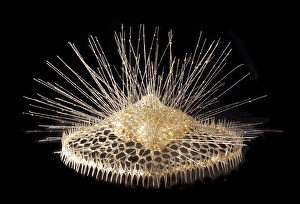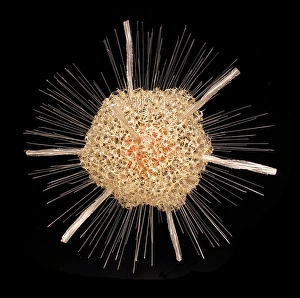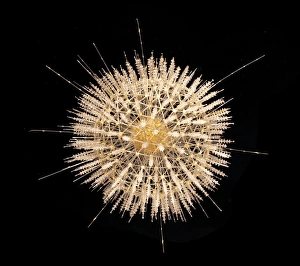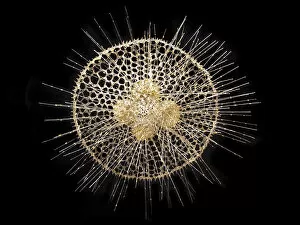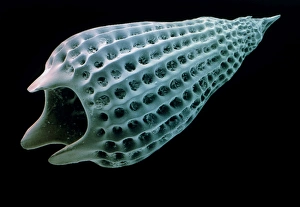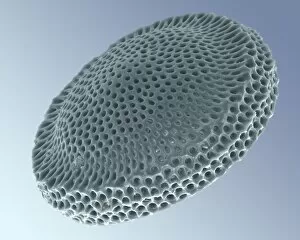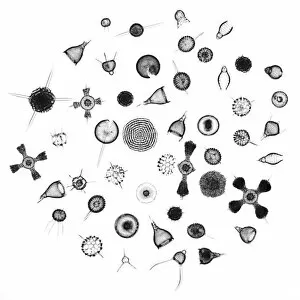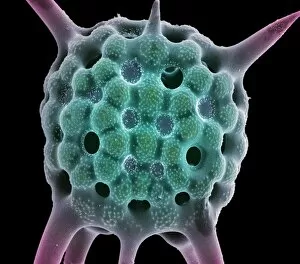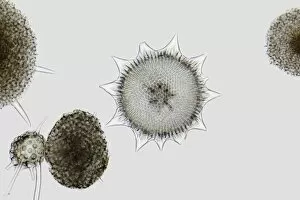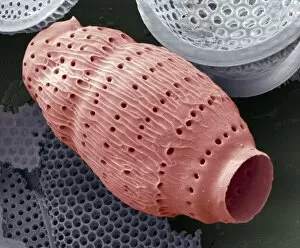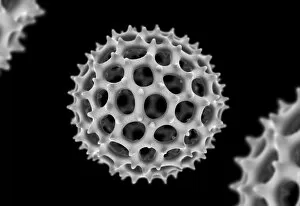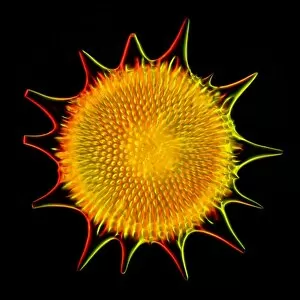Radiolarian Collection
Radiolarians, a fascinating group of marine microorganisms, are known for their intricate and beautiful skeletal structures
All Professionally Made to Order for Quick Shipping
Radiolarians, a fascinating group of marine microorganisms, are known for their intricate and beautiful skeletal structures. One such example is Acanthophracta, a genus that displays an array of spiky arm-like extensions. These delicate structures serve as both protection and feeding apparatus for the organism. Another captivating species is Acrosphaera radiolarian, which can be observed under scanning electron microscopy (SEM). The SEM images reveal the intricate details of its spherical skeleton, showcasing the complexity and diversity within this group. Dorataspis diodon is another remarkable radiolarian species with a distinctive appearance. Its body resembles a spiked ball or hedgehog, providing it with defense against predators in its aquatic habitat. Aulacantha scolymantha is yet another stunning radiolarian species characterized by its long needle-like spines. These protrusions give it an ethereal appearance as they extend outward from its central body. The artistic representation of Elaphospyris Spyroidea in Ernst Haeckel's Kunstformen der Natur showcases the beauty and intricacy of these organisms' skeletal structures. Plate 22 captures the elegance and symmetry found within nature's creations. Actinomma asteracanthion stands out among other radiolarians due to its star-shaped skeleton adorned with numerous spines. This unique morphology allows Actinomma asteracanthion to capture prey efficiently while also providing protection against potential threats. While not strictly classified as a radiolarian but rather a heliozoan, Actinophrys sol deserves mention for its striking appearance. With numerous slender pseudopodia extending from its central body like rays of sunlight, this organism truly lives up to its name "sun animalcule. " Heliosphaera actinota exhibits an extraordinary combination of circular patterns on its spherical shell along with radial spikes emanating from each patterned section. This species showcases the intricate designs that they are capable of creating.



